
The Avon Valley Railway (AVR) is a standard gauge heritage railway in South Gloucestershire, England, operated by a local group, the Avon Valley Railway Company Ltd. The 3-mile (5 km) heritage line runs from Oldland Common to Avon Riverside. It follows the Avon Valley southeast from Oldland Common to Bitton and then it runs alongside the River Avon from Bitton towards Saltford.

The Somerset and Dorset Joint Railway, also known as the S&D, SDJR or S&DJR, was an English railway line connecting Bath and Bournemouth, with a branch from Evercreech Junction to Burnham-on-Sea and Bridgwater. Strictly speaking, the main line ran from Bath Junction to Broadstone, as the line between Broadstone and Bournemouth was owned by the London and South Western Railway, while the line between Bath Junction and Bath was owned by the Midland Railway.

The Wessex Main Line is the railway line from Bristol Temple Meads to Southampton Central. Diverging from this route is the Heart of Wessex Line from Westbury to Weymouth. The Wessex Main Line intersects the Reading to Taunton Line at Westbury and the West of England Main Line at Salisbury.
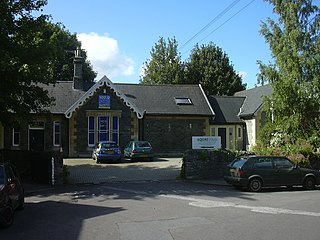
Weston (Bath) was a small railway station in Bath, England, about a mile west of Bath Green Park railway station on the Midland Railway line.

The Bristol and Bath Railway Path is a 15-mile (24 km) off-road cycleway, part of National Cycle Network National Cycle Route 4. It has a 3-metre (9.8 ft) wide tarmacked surface, and was used for 2.4 million trips in 2007, increasing by 10% per year.
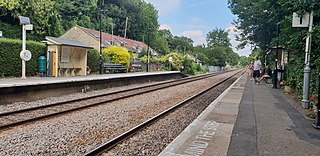
Avoncliff railway station serves the small village of Avoncliff in Wiltshire, England, together with the nearby villages of Westwood and Winsley, and Turleigh hamlet. It is next to the Kennet and Avon Canal and almost adjacent to the Avoncliff Aqueduct, so it is popular with walkers and cyclists who wish to travel along the canal path or the picturesque walks around the station.
The Wilts, Somerset and Weymouth Railway (WS&WR) was an early railway company in south-western England. It obtained Parliamentary powers in 1845 to build a railway from near Chippenham in Wiltshire, southward to Salisbury and Weymouth in Dorset. It opened the first part of the network but found it impossible to raise further money and sold its line to the Great Western Railway (GWR) in 1850.

Mangotsfield railway station was a railway station on the Midland Railway route between Bristol and Birmingham, 5 miles (8.0 km) north-east of Bristol Temple Meads and 82 miles (132 km) from Birmingham New Street, serving the village of Mangotsfield in South Gloucestershire, England. The station was opened in 1845 by the Bristol and Gloucester Railway, but had very little in the way of passenger amenities. The station was resited in 1869 to serve the new Mangotsfield and Bath Branch Line, and became an important junction station with extensive facilities and six platforms. Passenger footfall however failed to match the station's size, though at its peak eight staff were employed. The station closed in 1966 when services to Bath ended as part of the Beeching cuts, and the line through the station closed in 1969. The railway became a cycle path in the 1980s, and is a popular resting point on the route as several of the station's walls and platforms are still in situ.
The Bristol and North Somerset Railway was a railway line in the West of England that connected Bristol with Radstock, through Pensford and further into northern Somerset, to allow access to the Somerset Coalfield. The line ran almost due south from Bristol and was 16 miles (26 km) long.
There are 22 disused railway stations on the Bristol to Exeter line between Bristol Temple Meads and Exeter St Davids. The line was completed in 1844 at which time the temporary terminus at Beambridge was closed. The most recent closure was Tiverton Junction which was replaced by a new station} on a different site in 1986. 12 of the disused stations have structures that can still be seen from passing trains.

Bitton railway station is the main station of the Avon Valley Railway. It is located near the village of Bitton, South Gloucestershire.
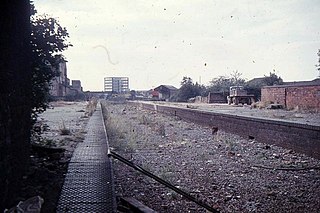
Fishponds railway station was a station in Fishponds, Bristol, England, which was closed by Dr Beeching's cuts in the 1960s.
The Mangotsfield and Bath branch line was a railway line opened by the Midland Railway Company in 1869 to connect Bath to its network at Mangotsfield, on its line between Bristol and Birmingham. It was usually referred to as "the Bath branch" of the Midland Railway.

Warmley was a small railway station just south of Mangotsfield on the Midland Railway Mangotsfield and Bath Branch Line. The station was sited just north of a level crossing on the A420 road through the village. It had wooden buildings: the shelter on the down platform survives and is used on occasion as a refreshment stop on the Bristol & Bath Railway Path, which follows the route of the railway.
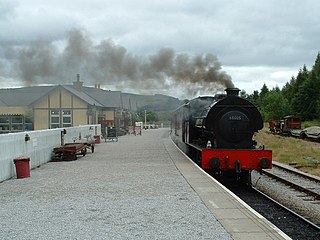
Bolton Abbey railway station is on the Embsay and Bolton Abbey Steam Railway. It serves Bolton Abbey, although it is closer to Bolton Bridge, in North Yorkshire, England and several countryside walking routes. The station is the current terminus of the steam railway.

Staple Hill railway station was on the Midland Railway line between Bristol and Gloucester on the outskirts of Bristol. The station was on the Bristol and Gloucester Railway line, but opened in 1888, 44 years after the line had been opened through the site. It served the Victorian suburban developments in the area to the south of Mangotsfield.
Abergavenny Junction railway station was a station situated near the junction made between the London and North Western Railway's Heads of the Valleys line and the West Midland Railway's Newport, Abergavenny and Hereford Railway, which served the town of Abergavenny in the Welsh county of Monmouthshire.

Padbury railway station served the village of Padbury in the English county of Buckinghamshire. It opened in 1878 as part of the Buckinghamshire Railway's branch line to Verney Junction which provided connections to Banbury, Bletchley and Oxford and closed in 1964.
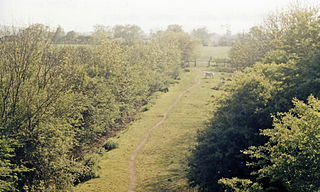
Cassington Halt was a single platform halt opened by the Great Western Railway on 9 March 1936 on the Oxford, Witney and Fairford Railway to serve the village of Cassington, Oxfordshire, just south of the A40.

Gelli Felen Halt railway station was a station on the London and North Western Railway's Heads of the Valleys line near the settlement of Gellifelin in the Welsh county of Monmouthshire.















